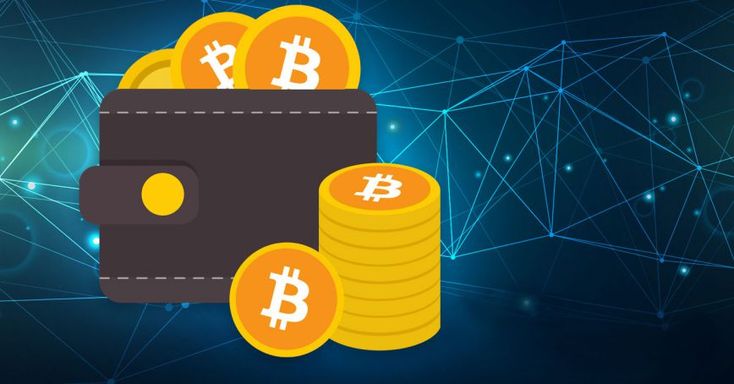Stepping into the world of cryptocurrency can feel overwhelming, especially when it comes to understanding how to safely store your digital assets. If you’re new to Bitcoin and wondering how to protect your investment, having a Bitcoin wallet for beginners explained in simple terms is essential for your crypto journey. A Bitcoin wallet isn’t actually a physical wallet that stores coins—it’s a digital tool that manages your Bitcoin addresses and private keys, allowing you to send, receive, and monitor your Bitcoin transactions. Think of it as your personal bank account for cryptocurrency, but with much more control and responsibility placed in your hands. Understanding Bitcoin wallets is crucial because, unlike traditional banking, there’s no customer service number to call if you lose access to your funds. This guide will walk you through everything you need to know about Bitcoin wallets, from the basics to advanced security practices, ensuring you can confidently manage your cryptocurrency investments.
What Is a Bitcoin Wallet and How Does It Work?

A Bitcoin wallet is essentially a software program or hardware device that stores the cryptographic keys needed to access your Bitcoin on the blockchain. When people say they’re storing Bitcoin in a wallet, they’re actually storing the private keys that prove ownership of specific Bitcoin addresses. Every Bitcoin wallet contains two essential components: a public key (your Bitcoin address) and a private key (your secret password). Your public key is like your bank account number—you can share it with anyone who wants to send you Bitcoin. Your private key, however, is like your PIN number and should never be shared with anyone. The wallet doesn’t actually contain Bitcoin; instead, it interacts with the Bitcoin blockchain to show your balance and facilitate transactions. When you want to send Bitcoin, your wallet uses your private key to create a digital signature that authorizes the transaction.
Types of Bitcoin Wallets for New Users
Hot Wallets vs. Cold Wallets
Bitcoin wallets fall into two main categories: hot wallets and cold wallets. Hot wallets are connected to the internet, making them convenient for frequent transactions but potentially more vulnerable to cyber attacks. Cold wallets are offline storage solutions that offer maximum security but less convenience for daily use.
Software Wallets (Hot Wallets)
Mobile Wallets Mobile Bitcoin wallets are smartphone apps that make managing your Bitcoin incredibly convenient. Popular options include Electrum, Mycelium, and Trust Wallet. These wallets are perfect for beginners who want to make small purchases or send Bitcoin to friends occasionally.
Desktop Wallets Desktop wallets run on your computer and offer more features than mobile wallets. Examples include Electrum, Bitcoin Core, and Exodus. They’re ideal for users who prefer managing their Bitcoin from their computer and want more control over their transactions.
Web Wallets Web wallets operate through your browser and are hosted by third-party services. While convenient, they require you to trust the service provider with your private keys. Popular web wallets include Blockchain.info and Coinbase Wallet.
Hardware Wallets (Cold Wallets)
Hardware wallets are physical devices that store your private keys offline. They’re considered the gold standard for Bitcoin security. Leading brands include Ledger, Trezor, and KeepKey. Although they require an initial investment, hardware wallets are essential for anyone holding significant amounts of Bitcoin.
Paper Wallets
Paper wallets involve printing your private and public keys on paper and storing them securely offline. While highly secure from digital threats, paper wallets can be easily damaged or lost, making them less practical for beginners.
How to Choose Your First Bitcoin Wallet
Security Considerations
When selecting your first Bitcoin wallet, security should be your top priority. Look for wallets that offer features like two-factor authentication, backup and recovery options, and a strong reputation in the cryptocurrency community. For beginners, starting with a reputable mobile wallet like Electrum or a web wallet from a trusted exchange like Coinbase can provide a good balance of security and usability. As your Bitcoin holdings grow, consider upgrading to a hardware wallet for enhanced protection.
User Experience and Features
Choose a wallet with an intuitive interface that doesn’t overwhelm you with technical jargon. Look for features like QR code scanning for easy transactions, clear transaction history, and reliable customer support.
Reputation and Reviews
Research wallet developers and read user reviews before making your choice. Established wallets with active development communities and transparent security practices are generally safer options for newcomers.
Setting Up Your Bitcoin Wallet: Step-by-Step Guide
Download and Installation
- Choose a reputable wallet from official sources only (App Store, Google Play, or the wallet’s official website)
- Verify the app’s authenticity by checking developer credentials and reviews
- Download and install the wallet application on your device
- Create a new wallet rather than importing an existing one for your first setup
Backup and Recovery
Creating a backup is the most critical step in wallet setup. Most wallets will generate a “seed phrase” or “recovery phrase”—typically 12 or 24 randomly selected words. This phrase can restore your wallet if your device is lost or damaged.
Important backup tips:
- Write down your seed phrase on paper (never store it digitally)
- Store multiple copies in secure, separate locations
- Never share your seed phrase with anyone
- Consider using a metal backup device for long-term storage
Security Settings
Enable all available security features during setup:
- Set a strong, unique password
- Enable two-factor authentication if available
- Configure automatic lock settings
- Set up transaction confirmation requirements
Bitcoin Wallet Security Best Practices

Private Key Management
Your private keys are the most important aspect of Bitcoin wallet security. Never share them with anyone, and avoid storing them on internet-connected devices. If someone gains access to your private keys, they can steal all your Bitcoin irreversibly.
Regular Backups
Create regular backups of your wallet, especially after receiving new Bitcoin or creating new addresses. Store these backups in multiple secure locations, preferably offline.
Software Updates
Keep your wallet software updated to protect against newly discovered vulnerabilities. Enable automatic updates when possible, but always download updates from official sources.
Phishing Protection
Be cautious of phishing attempts that try to steal your wallet credentials. Always type wallet URLs directly into your browser and never click suspicious links in emails or messages.
Common Bitcoin Wallet Mistakes to Avoid
New Bitcoin users often make costly mistakes that could have been easily prevented. Here are the most common pitfalls to avoid:
Losing Your Seed Phrase Many beginners underestimate the importance of their recovery phrase and fail to store it securely. Without this phrase, you cannot recover your Bitcoin if your device is lost or damaged.
Using Unverified Wallets Always download wallets from official sources and verify their authenticity. Fake wallet apps can steal your Bitcoin immediately upon deposit.
Storing Large Amounts on Exchanges While convenient, keeping significant amounts of Bitcoin on cryptocurrency exchanges exposes you to platform risks. Remember: “Not your keys, not your coins.”
Neglecting Security Updates Failing to update your wallet software can leave you vulnerable to known security exploits that have already been patched.
Advanced Bitcoin Wallet Features
Multi-Signature Wallets
Multi-signature (multisig) wallets require multiple private keys to authorize transactions, providing additional security for larger Bitcoin holdings. These wallets are excellent for businesses or individuals who want extra protection against theft or loss.
Hierarchical Deterministic (HD) Wallets
HD wallets generate new addresses for each transaction, improving privacy by making it harder to track your Bitcoin activity. Most modern wallets use HD technology by default.
Lightning Network Integration
Some advanced wallets support the Lightning Network, enabling faster and cheaper Bitcoin transactions for small payments. This feature is becoming increasingly important as Bitcoin adoption grows.
Conclusion
Understanding Bitcoin wallets is fundamental to safely participating in the cryptocurrency ecosystem. This bitcoin wallet for beginners explained guide has covered everything from basic concepts to advanced security practices, giving you the knowledge needed to confidently manage your Bitcoin investments. Remember that with great power comes great responsibility—Bitcoin wallets put you in complete control of your financial assets, but they also require you to take security seriously. Start with a reputable beginner-friendly wallet, always back up your seed phrase, and gradually learn more advanced features as you become comfortable with the basics.










